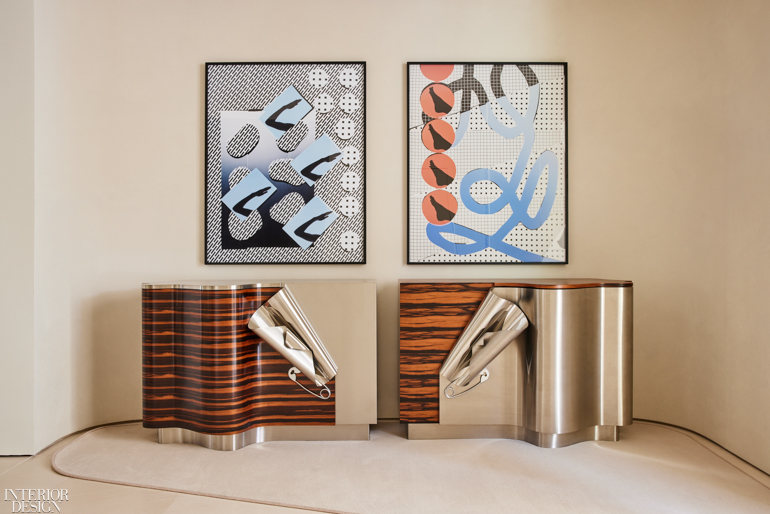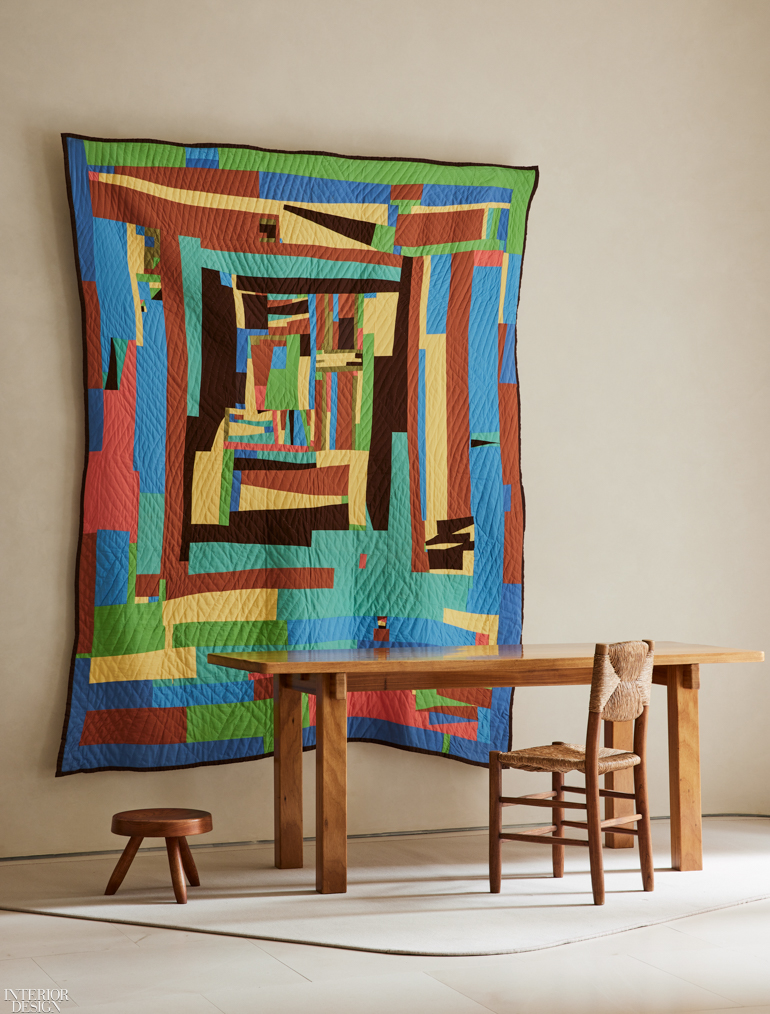Designing Women III: MOTHER Opens in TriBeCa
According to the National Women’s Law Center, more than 2.3 million women have left the American labor force since the beginning of the COVID-19 pandemic in March, 2020. For Hillary Petrie, partner with Stephanie Beamer and Crystal Ellis in New York’s Egg Collective, this data is more than just an “incredible loss in creative capital.” It points to the “motherhood penalty,” or the sociological term for the price women pay in their professional careers when they also serve as parents and caregivers. “Careers are too often side-burnered or abandoned,” says Beamer.
When the time came for the third iteration of Egg Collective’s Designing Women showcase of female-identified designers, Beamer says an organizing principal of motherhood “feels more on point than ever, after what’s transpired over the last year.” The trio, and curator Tealia Ellis Ritter, went looking for historical designers who were mothers, along the way finding some contemporary mother-daughter partnerships. “It’s not something that is in any way promoted historically,” says Petrie. “But motherhood, while obviously a time constraint on women’s practice, also might have given them a new creative lens to see their work. Design sometimes excels within constraints, and motherhood certainly could be a constraint that can help you create something new.”
Designing Women III: MOTHER, on display at Egg Collective’s Tribeca gallery from May 3-29 and online at eggcollective.com, offers a new look at a few all-time design classics from Gae Aulenti and Lella Vignelli along with new artwork including Faith Ringgold’s passionate ode to sculptor Selma Burke, Dear Selma, Everytime I See a Dime I Think of You and Body/Index, a beguiling photo collage by Carmen Winant. With an imposing table and two cabinet masterpieces on view, Maria Pergay serves as a kind of matriarch for the show. “As a mother of four,” says Beamer, “Pergay must have really been able to execute her vision and communicate her ideas and goals very effectively. She is an inspiration, and a wind at my back to keep at the practice. It’s incredibly buoyant.” Perhaps for Pergay and many others, the mother of invention could be motherhood itself.
See the Works on Display at the Egg Collective’s TriBeCa Gallery

Gae Aulenti was among the most accomplished postwar Italian designers and architects of her generation, as evidenced by her c. 1970s Jumbo table which sets five pieces of marble in a tectonic heft. A pot-scrubber inspired the Armor Floor Lamp by mother-daughter studio Konekt, which makes its debut at the show.

Lucia Derespinis designed her brass and enamel Beehive Lamp while working at George Nelson Associates, which in 1960 partnered with Nessen Studios for a range of outdoor lighting. It illuminates Maria Pergay’s monumental 1968 Bureau S/Wave Desk, in stainless steel with a leather insert.

After being falsely accused of plotting to assassinate Joseph Stalin and then fleeing Hitler’s occupation of Austria, Hungarian-born Eva Zeisel became the first instructor of industrial ceramics at Pratt. Yet her c. 1929 Schramberger Majolika-Fabrik Jug looks utterly contemporary.

The blackened-steel armature of Jean Pelle’s Lure Radiata emits a dappled light through the hand-painted, cast-cotton paper leaves. Below, Lella Vignelli’s iconic Metaphora Coffee Table and its geometric feet of travertine shapes continues to inspire.

Few designers produce masterpieces well into their fifth decade of work, but then there’s nobody like Maria Pergay, who pushed the limits of stainless steel and ebony macassar to produce these maximalist Meuble Drape/Drape Cabinet A and B in 2005. Above them, Hannah Whitaker pushes photography into the realm of pop abstraction in her 2017 archival pigment prints Salute and Kick, made of single negatives.

Though she never trained formally, Line Vautrin established herself as a bronze-worker nonpareil in post-World War II Paris. Her c. 1942-1950 Bronze doré and cork La Mer “The Sea” and Plume “Feather” boxes rest beside her c. 1950 Bronze argenté Puzzle, above which hangs Hair, a glorious drypoint from 2000 by another French virtuoso, the inimitable Louise Bourgeois.

Kelly Behun has worked with everyone from Andrée Putman to Anda Andrei—but the wit of her Charm Table, with its eponymous ornament dangling from a cast metal base topped with ebonized ash top, is all her own. Kai Avent-deLeon recently opened a homeware store, Raini Home, near her Bed-Stuy retail destination, Sincerely, Tommy, and stocks it full of her own gems like this painted wood DV1 Divider. Fellow Brooklynites behind Calico Wallpaper created a site-specific wall installation for which Willow Cope, the young daughter of creative director Rachel Cope, adorned linen wallpaper with great strokes of oil sticks.

Luna Paiva’s botanic, bronze Yucca from 2016 positively glows near a new iteration of Katrina Vonnegut’s Bow Chair, whose visual ease belies an expert construction of oak and green velvet. On the wall, Egg Collective’s own Landry Wall-Mount Bookcase offers soft curves of walnut storage.

In the 1960s, Renate Müller worked with a German toy company to conceive ranges of animals and objects for children’s balance training and orthopedic and sensory exercises. Three decades later, she bought back the rights to her creations and began issuing them herself, gathered here as Universe II: Shadows on the Moon, a 2015 play sculpture of fourteen pieces in jute and leather.

Loretta Pettway Bennett is a fifth-generation quilter in Alabama’s famed Gee’s Bend community, but brings her own vibrant musicality to 2012’s Flow Plains quilt. Furnishings by Charlotte Perriand gather nearby: her c. 1960 Dining Table, Edition Steph Simon is a simple yet effective showcase of oak, which joins rush to form the c. 1950 Set of 4 Chairs. A darker ash forms the charming Low Stool, also c. 1950.


